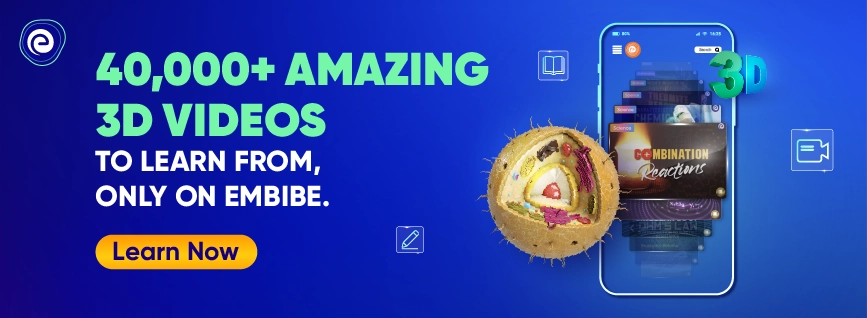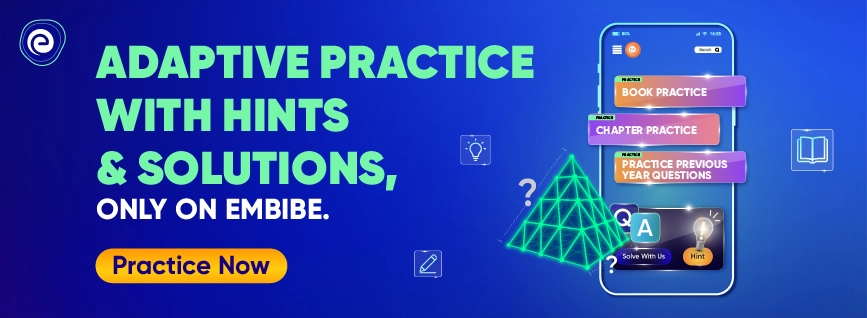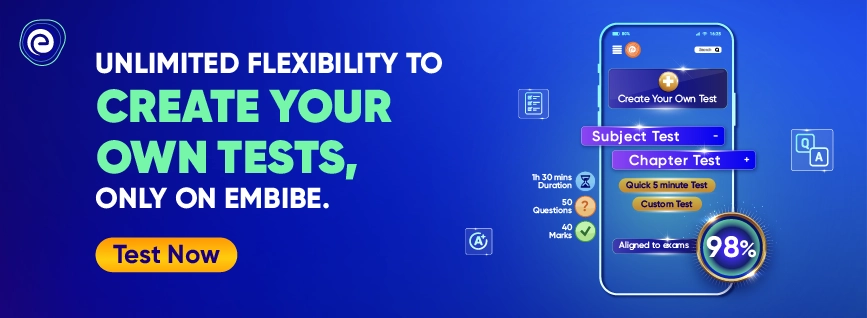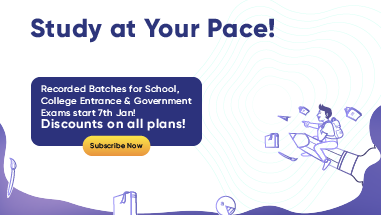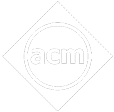- Written by Rahul Khatake
- Last Modified on 7-03-2023
Sikkim Board Class 8 Exam 2023
Sikkim Board conducts and regulates the exams for all the schools affiliated in Sikkim Board. The board exams are conducted by the Sikkim Board of Secondary Education. Currently, the board is following the National Education Policy and it will help in strengthening the understanding and concepts. The Ministry of Education is supported by the Education Secretariat, which the Directorate of School Education assists. The Director of School Education is in charge of elementary education.
Class 8 students of the Sikkim board are assessed through Continuous and Comprehensive Evaluation (CCE). In the CCE system, along with the scholastic area, co-scholastic areas are also evaluated. The Class 8 exams are likely to be conducted by the school authorities. Furthermore, the students must follow the NCERT guidelines and books so that they can ace the exams.
Sikkim Board Class 8 Exam Summary 2023
The board-affiliated schools conduct the exams according to the guidelines of the Sikkim Education Board. The exam is evaluated through CCE. In the CCE system, scholastic and co-scholastic areas are evaluated based on the following subjects and criteria. The Sikkim Board Class 8 exam is conducted internally by schools. Students are required to study from the school textbooks to clear the exam. Also, they do not need to refer to topics outside the syllabus to prepare for the exam.
| Particulars |
Details |
| Name of the Exam |
Sikkim Board Class 8 Exam |
| Conducting Body |
Sikkim Board |
| Level of the Exam |
School-level |
| Mode of Exam |
Offline |
| Language Subjects |
English, Hindi, Sanskrit, Urdu, regional Languages |
| Academic Subjects |
Mathematics, Science, and Social Science |
| Exam Pattern |
Semester |
| Medium of Exam |
English |
Sikkim Board Official Website Link
http://sikkimhrdd.org/
Sikkim Board Class 8 Exam Syllabus 2023
The Sikkim Board follows the NCERT (National Council of Educational Research and Training) syllabus and texts. SCERT developed its curriculum in accordance with NCF 2005, with a focus on the best quality education. The curriculum is designed to promote economic growth and the long-term development of the state and nation through education.
The books to refer for Sikkim Board Class 8 include:
Following the Sikkim Board Class 8 exams syllabus is extremely crucial for students across different classes. After Class 8, you will be appearing for higher classes itself, which is why it is necessary that the students follow the syllabus carefully. Below we have provided the Sikkim Board Class 8 exam syllabus:
- Mathematics
- Science
- Social Science
Sikkim Board Class 8 Mathematics Syllabus
Mathematics is a practice-based subject. Students should practice questions on all the chapter topics. It will help them remember the formulas. In the section below, we have provided the Mathematics syllabus for Sikkim Board Class 8:
| Mathematics Syllabus for Class 8 |
| Chapter No. |
Name of the Chapter |
| 1 |
Rational Numbers |
| 2 |
Linear Equations in One Variable |
| 3 |
Understanding Quadrilaterals |
| 4 |
Practical Geometry |
| 5 |
Data Handling |
| 6 |
Squares and Square Roots |
| 7 |
Cubes and Cube Root |
| 8 |
Comparing Quantities |
| 9 |
Algebraic Expressions and Identities |
| 10 |
Visualizing Solid Shapes |
| 11 |
Mensuration |
| 12 |
Exponents and Powers |
| 13 |
Direct and Inverse Proportions |
| 14 |
Factorization |
| 15 |
Introduction to Graphs |
| 16 |
Playing with Numbers |
Sikkim Board Class 8 Science Syllabus
Science is one of the most important subjects in the Sikkim board. Therefore, referring to the Sikkim board Science syllabus can help to prepare students for future exams. In the table below, we have provided the Science syllabus for the Class 8 Sikkim board.
| Science Syllabus for Class 8 |
| Chapter No. |
Chapter Name |
Topics |
| 1 |
Crop Production and Management |
Agricultural Practices, Basic Practices of Crop Production, Preparation of Soil, Sowing, Adding Manure and Fertilizers, Irrigation, Protection from Weeds, Harvesting Storage, Food from Animals |
| 2 |
Microorganisms: Friend and Foe |
Microorganisms, Where do Microorganisms Live?, Microorganisms and Us, Harmful Microorganisms, Food Preservation, Nitrogen Fixation, Nitrogen cycle |
| 3 |
Synthetic Fibres and Plastics |
What are Synthetic Fibres?, Types of Synthetic Fibres, Characteristics of Synthetic Fibres, Plastics, Plastics as Materials of Choice, Plastics and the Environment |
| 4 |
Materials: Metals and Non-Metals |
Physical Properties of Metals and Non-metals, Chemical Properties of Metals and Non-metals, Uses of Metals and Non-metals |
| 5 |
Coal and Petroleum |
Coal, Petroleum, Natural Gas, Some Natural Resources are Limited |
| 6 |
Combustion and Flame |
What is Combustion?, How Do We Control Fire?, Types of Combustion, Flame, Structure of a Flame, What is a Fuel?, Fuel Efficiency |
| 7 |
Conservation of Plants and Animals |
Deforestation and Its Causes, Consequences of Deforestation, Conservation of Forest and Wildlife, Biosphere Reserve, Flora and Fauna, Endemic Species, Wildlife Sanctuary, National Park, Red Data Book, Migration, Recycling of Paper, Reforestation |
| 8 |
Cell — Structure and Functions |
Discovery of the Cell, The Cell, Organisms show Variety in Cell Number, Shape and Size, Cell Structure and Function, Parts of the Cell, Comparison of Plants and Animals Cells |
| 9 |
Reproduction in Animals |
Modes of Reproduction, Sexual Reproduction, Asexual Reproduction |
| 10 |
Reaching the Age of Adolescence |
Adolescence and Puberty, Changes at Puberty, Secondary Sexual Characters, Role of Hormones in Initiating Reproductive Function, Reproductive Phase of Life in Humans, How is the Sex of the Baby Determined?, Hormones other than Sex Hormones, Role of Hormones in Completing the Life History of Insects and Frogs, Reproductive Health |
| 11 |
Force and Pressure |
Force: A push or a Pull, Forces are due to an Interaction, Exploring Forces, A Force can Change the State of Motion, Force can Change the Shape of an object, Contact Forces, Non-contact Forces, Pressure, Pressure Exerted by Liquids and Gases, Atmospheric Pressure |
| 12 |
Friction |
Force of Friction, Factors affecting Friction, Friction: A Necessary Evil, Increasing and Reducing Friction, Wheels Reduce Friction, Fluid Friction |
| 13 |
Sound |
Sound is Produced by Vibrating Bodies, Sound Produced by Humans, Sounds Needs a Medium for Propagation, We Hear Sound through Our Ears, Aptitude, Time Period and Frequency of a vibration, Audible and Inaudible Sounds, Noise and Music, Noise Pollution |
| 14 |
Chemical Effects of Electric Current |
Do Liquids Conduct Electricity?, Chemical Effects Of Electric Current, Electroplating |
| 15 |
Some Natural Phenomena |
Lightning, Charging by Rubbing, Types of Charges and Their Interaction, Transfer of Charge, The Story of Lightning, Lightning Safety, Earthquakes |
| 16 |
Light |
What makes Things Visible, Laws of Reflection, Regular and Diffused Reflection, Reflected Light Can be Reflected Again, Multiple Images, Sunlight – White or Coloured, What is inside Our Eyes?, Care of the Eyes, Visually Impaired Persons Can Read and Write, What is the Braille System? |
| 17 |
Stars and The Solar System |
The Moon, The Stars, Constellations, The Solar System, Some Other Members of the Solar System |
| 18 |
Pollution of Air and Water |
Air Pollution, How Does Air Get Polluted?, Case Study- The Taj Mahal, Greenhouse Effect, What can be done? Water Pollution, How Does Water Get Polluted?, What is Potable Water, and How is Water Purified?, What Can be Done? |
Sikkim Board Class 8 Social Science Syllabus
Social Science is a crucial subject for all students. It is important that the students pass the exams and therefore, they should give equal focus to all sections of the subject. Students can refer to the Social Science syllabus given below:
| Social Science Syllabus for Class 8 |
| Chapter No. |
Chapter Name |
| HISTORY |
|
| 1 |
How, When and Where |
| 2 |
From Trade to Territory: The Company Establishes Power |
| 3 |
Ruling the Countryside |
| 4 |
Tribals, Dikus and the Vision of a Golden Age |
| 5 |
When People Rebel |
| 6 |
Colonialism and the City |
| 7 |
Weavers, Iron Smelters and Factory Owners |
| 8 |
Civilising the “Native”, Educating the Nation |
| 9 |
Women, Caste and Reform |
| 10 |
The Changing World of Visual Arts |
| 11 |
The Making of the National Movement: 1870s – 1947 |
| 12 |
India after Independence |
| GEOGRAPHY |
|
| 1 |
Resources |
| 2 |
Land, Soil, Water, Natural Vegetation and Wildlife Resources |
| 3 |
Mineral and Power Resources |
| 4 |
Agriculture |
| 5 |
Industries |
| 6 |
Human Resources |
| CIVICS |
|
| Unit I: The Indian Constitution and Secularism |
|
| 1 |
The Indian Constitution |
| 2 |
Understanding Secularism |
| Unit II: Parliament and the Making of Laws |
|
| 3 |
Why do we need a Parliament? |
| 4 |
Understanding Laws |
| Unit III: The Judiciary |
|
| 5 |
Judiciary |
| 6 |
Understanding Our Criminal Justice System |
| Unit IV: Social Justice and the Marginalised |
|
| 7 |
Understanding Marginalisation |
| 8 |
Confronting Marginalisation |
| Unit V: Economic Presence of the Government |
|
| 9 |
Public Facilities |
| 10 |
Law and Social Justice |
Sikkim Board Class 8 Exam Blueprint 2023
Students must be familiar with the exam blueprint. It will give students an idea to differentiate between the different chapters and which chapter carries how many marks. The exam blueprint, therefore, talks about the marks division for chapters or units of a subject. Go through the sections below to be familiar with the exam blueprint.
Sikkim Board Class 8 Mathematics Blueprint
Class 8 Maths for Sikkim contains 13 chapters in total. Knowing the blueprint gives students an idea of what to prioritise while studying for the exam. The marks division for Sikkim board Class 8 is given below:
| Chapter No. |
Chapters |
Weightage |
| 1 |
Rational Numbers |
8 |
| 2 |
Linear Equations in one variable |
6 |
| 3 |
Practical Geometry |
4 |
| 4 |
Data handling |
2 |
| 5 |
Square and Square roots |
5 |
| 6 |
Algebraic Expressions and Identities |
6 |
| 7 |
Visualising solid shapes |
6 |
| 8 |
Mensuration |
8 |
| 9 |
Exponent and powers |
8 |
| 10 |
Direct and Inverse proportions |
8 |
| 11 |
Factorisation |
6 |
| 12 |
Introduction to graphs |
9 |
| 13 |
Playing with Numbers |
4 |
| Total |
80 |
|
Sikkim Board Class 8 Science Blueprint
Science introduces students to various concepts like microorganisms, sound, light, and many more. Each chapter included in the syllabus is important and students must strategise their studies according to the weightage that each chapter carries. The table below provodes the marks division for Sikkim board Science Class 8 is given below:
| Chapter No |
Chapters |
Weightage |
| 1. |
Crop Production and Management |
3 |
| 2. |
Microorganisms: Friend and Foe |
4 |
| 3. |
Materials: Metals and Non-Metals |
5 |
| 4. |
Coal and Petroleum |
3 |
| 5. |
Cell-Structure and Function |
6 |
| 6. |
Force and Pressure |
3 |
| 7. |
Reproduction in Animals |
7 |
| 8. |
Reaching the Age of Adolescence |
6 |
| 9. |
Sound |
7 |
| 10. |
Chemical Effects of Electric Current |
7 |
| 11. |
Some Natural Phenomena |
8 |
| 12. |
Light |
7 |
| 13.. |
Stars and the Solar System |
6 |
| 14. |
Pollution of Air and Water |
8 |
| TOTAL |
80 |
|
Sikkim Board Class 8 Social Science Blueprint
Social Science for Sikkim Board Class 8 is divided into History, Geography, and Political Science. The blueprint provides students with the weightage for each section so that students will know what chapters to study and give more focus on. The marks division for Sikkim board Class 8 Social Science is given below:
| Section |
Weightage |
| History |
27 |
| Geography |
26 |
| Political Science |
27 |
| Total |
80 |
Sikkim Board Class 8 Study Plan to Maximise Scores
Students in Sikkim Board Class 8 need to ensure that they prepare a study plan from now on only. This will give students the courage to stay ahead of their competition. Furthermore, the habit of making a study plan will ensure that they do so for higher classes too.
This will ensure that they score more marks in the examination, be it for Class 8 or in higher education. Thus, in the sections below, we are providing comprehensive preparation tips and detailed study plan to help the students prepare for exams.
Sikkim Board Class 8 Preparation Tips
The preparation tips are important to help students grease their preparation. They help students study smartly to achieve their goals. Students can refer to the preparation tips below to ace their Sikkim Board Class 8 exam.
- Curriculum: Know the exact syllabus marking breakup for Term I and Term II. Have a comprehensive knowledge of Formative Assessment (FA) activities, and involve completely in FA Activities.
- Timetable: Prepare a well-planned timetable for systematic study and follow it strictly. Also, 10 to 15 days before the Summative Assessment (SA), prepare an exam revision strategy.
- Have a positive attitude: Actively engage in scholastic and co-scholastic activities in the school. Be well aware of your strengths and weaknesses in each subject. Focus on your strengths rather than on weaknesses. Have a positive attitude towards school, syllabus, teacher, studies, parents, etc.
- Practice questions and take tests: Students should practice as many questions as they can to grasp the concepts and improve their problem-solving skills. Once they are done practicing they can take mock tests to understand how prepared they actually are. The practice questions and mock tests are both available for on Embibe.
Sikkim Board Class 8 Detailed Study plan
Students must have a detailed study plan laid out so that they can prepare for the exams in a proper manner. It is crucial that students in Sikkim Board Class 8 focus on the small elements and ensure that they are following the syllabus. They must have a detailed study plan for every subject so that they can prepare for their exams efficiently. For the convenience of students, below we have laid down the strategy plan for various subjects of Sikkim Board Class 8
Study Strategy for Mathematics:
The following are some ways for improving your mathematical understanding.
- After understanding the basic concept, solve simple problems followed by difficult ones.
- Note down the important formulas and rules on a sheet of paper or write it on a flashcard or chart. Revise it regularly.
- Solve exercise questions and solve problems in the textbook regularly.
- Don’t forget to write the answer and underline it.
- Read the word problem twice before solving the question.
- Substitute the correct values in the equations and be careful and vigilant in transposing the numbers.
- Have a clear idea of question patterns, marks weightage, and important topics.
- Practice previous year question papers and evaluate on your own. If there are any errors, learn the concepts again for perfection.
Study Strategy for Science:
- In science, most of the questions are of application type. Therefore, be thorough with activities and experiments.
- Make a list of important formulas, chemistry equations and reactions, laws, diagrams, Scientist, and their inventions for quick recall.
- Learn the labeled diagrams properly.
- Attempt all the questions from Physics, Chemistry, and Biology part.
- Give more importance to the numerical in Physics.
- Take frequent practice tests on mock papers and previous year question papers.
Study Strategy for Social Science
- Read the textbook thoroughly, and while reading, make a list of important dates, places, etc.
- Learn the maps thoroughly and tight to the main answer sheets for the exam.
- Have an idea of the state’s and county’s current political situations.
- For long answer-type questions, write the answer in the points with subheadings.
- Give preference to previous years’ question papers.
- Take frequent mock tests to check the understanding of the concept and time management.
Study Strategy for English
The English question paper mainly evaluates writing skills and knowledge of the language.
- Give more importance to grammar, passage, and letter writing.
- Read the textbook with a clear understanding.
- Avoid spelling errors in the answers.
- Reading newspapers, storybooks, science fiction, article writing, and story writing will help to increase English knowledge.
FAQs on Sikkim Board Class 8 Exam 2023
Here are some frequently asked questions on Sikkim Board Class 8 exam:
Q: Where can I get practice questions for Sikkim Board Class 8 subjects?
Ans: Students can get practice questions for Sikkim Board Class 8 on the Embibe app.
Q: Is there any board exam for Sikkim Board Class 8?
Ans: No, students are evaluated on the basis of performance in school-level exams and CCE (Continuous Comprehensive Evaluation).
Q: What is the medium of instruction for Sikkim Board Class 8?
Ans: Sikkim Board provides education in English medium. Students may also pursue education in Nepali from regional schools.
Q: What are the marks required to get an A1 grade in Sikkim Board Class 8?
Ans: Sikkim Board follows grade-wise marks for exam preparation. Students must score 85-100 to get A1 grade in their exams.
Q: Can I take mock tests for Sikkim Board Class 8 on Embibe?
Ans: Yes. Students can take mock tests for Sikkim Board Class 8 subjects on the Embibe app.
List of Educational Institutions for Sikkim Board Class 8
Sikkim is the second smallest state in India, and has around 1300 schools. List of Schools will give students an idea about the schools that are affiliated with the board. In the table below, we have provided the list of educational institutions for 8th Sikkim Board:
Future Exams After Sikkim Board Class 8
Students are promoted from class 8 to class 9 based on their performance in the school-based exam and Continuous Comprehensive Evaluation (CCE). Students can also appear for a wide range of competitive exams. Some of the competitive Olympiad exams in which students from class 8 can appear are:
| Competitive Exams |
Official Link |
| International Science Olympiad (ISO) |
ISO |
| International Maths Olympiad (IMO) |
IMO |
| English International Olympiad (EIO) |
EIO |
| General Knowledge International Olympiad (GKIO) |
GKIO |
| International Computer Olympiad (ICO) |
ICO |
| International Drawing Olympiad (IDO) |
IDO |
| National Essay Olympiad (NESO) |
NESO |
| National Social Studies Olympiad (NSSO) |
NSSO |
Some of the competitive exams to which class 8 students can appear are:
- National Talent Search Examination (NTSE): Science, Maths, Social Science, Mental Ability, and General Knowledge are tested through this exam. Qualified students are awarded cash prizes and scholarships for the next academic year.
- National Level Science Talent Search Exam (NLSTSE): The subjects included are Maths, Science, and other general Awareness questions.
- Indian National Olympiad (INO): The syllabus includes Physics, Chemistry, Biology, Astronomy, and Junior Science. This exam has a five-stage procedure. The initial stage is the written exam conducted by NSE (National Standard Examination).
- GeoGenius: In this exam, students are asked to mark the various locations of India on a blank map to create interest in geography.
- National Interactive Maths Olympiad (NIMO): This exam tests and analyses the mental ability and mathematical skills of the students. It aims to reduce the fear of mathematics and make it an easy and loving subject.










